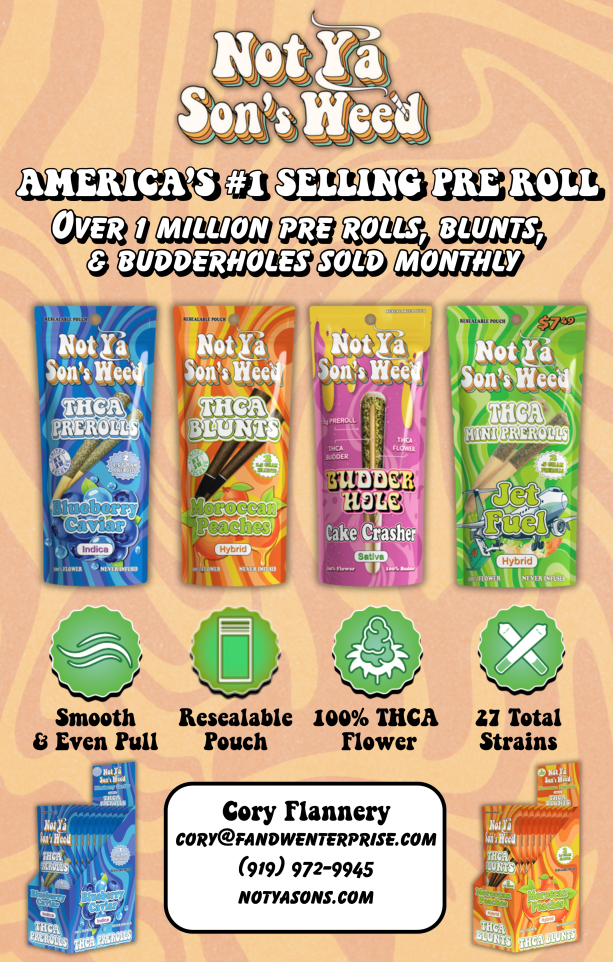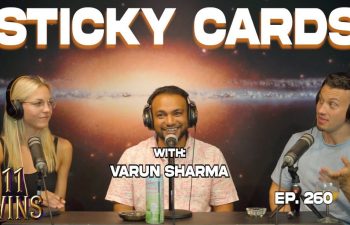Innovation and Adaptation: VPR Brands' Secret Sauce
This month, we had the opportunity to sit down with VPR Brands’ Chief Operating Officer, Dan Hoff—and the results were epic. What was intended to be a quick conversation to highlight their brand turned into an hour-long conversation, the results of which were far too lengthy to fit in the space allotted in print Never ones to deprive you, we’ve decided to offer the full conversation here in digital format. Read on for the inside track on the company that brought you, Honeystick, ELF VPR, and more!
VPR brands, from what I understand, started in 2004. That’s early as it gets for a company in this space. Tell me about the beginning.
So the company, even though it was founded in 2004, didn’t really start actively getting involved in the vapor space, which is currently its primary focus until really mid 2008 . . . In 2008 and 2009, we had some electronic cigarettes that looked more like those Cigalikes that you would see. You don’t really see them much at all anymore, but they were two-part electronic cigarettes where you would have the battery, which was a vaporizer component, and then you would also have a cartridge that was pre-filled with either tobacco or menthol flavor, and you would put them together and they got sold in gift boxes. That was really the infancy stage for the company, and it’s really evolved from there.
Were those the ones that looked like cigarettes when you screwed them together?
Yeah, correct. They actually had the same coloring too, and the paper with the white battery and kind of the tan cognac colored kind of backing and then different color rings or different color paper to indicate the flavor that it was, whether it was tobacco or menthol, and at that time you really only had tobacco and menthol flavor.
I think it’s safe to say that our readers are traditionally more accustomed to working with the scrappy underdogs. The industry was always in somewhat of a gray area of legality, so you had to keep it small. It appears that VPR started out as fairly white collar from the beginning. That’s kind of a different beast for this space. Would you agree with that?
Honestly, I’m happy that you got that façade, because we have had to fight and struggle and do everything that everybody else did really from the beginning. When we got into it, we were a very, very small company . . . if you’re somebody who innovates generally, you incur all the learning curve costs. So we were behind a lot of the pioneering that happened throughout the industry . . . We’ve always been kind of a small-knit team and really had to push for everything. At the time that e-cigs and vaporizers came out, many banks didn’t even want to open up a bank account for you. You didn’t have the things available to you that traditional businesses would, lines of credit, things like that . . . It always limited our growth. People didn’t really know who VPR brands was until now, but starting from 2008, we probably dealt with a lot more struggles than most of our competitors did to be able to build a sustainable business, especially with how quickly vaporizers change. I mean, we’re not making paper cups.
Between that time and now, a lot of major brands have come and gone. What has been your secret sauce for the staying power you’ve had?
I think that being the early player and witnessing a lot of the market trends helped us . . . Present day decisions are made off of historical data and trends. We developed a formula of how to try to get in and out of things as trends pop up. I would just say it’s survival of the most adaptable, and we’ve been able to adapt and evolve through the trends.
Let’s talk about your brands. VPR is the parent company, but the names people know are Elf and HoneyStick, among others. Those names are practically ubiquitous in the space, but it seems like the VPR name only started showing up recently. Was this intentional?
We never intended necessarily to put VPR in the background, but I guess the brands always ended up getting the spotlight. But we’ve begun to put an active focus on the fact that we have all these cool brands that we produce with similar consistencies and quality level. At the end of the day, it’s all us. So, we’ve put more effort into marketing the fact that we’re a publicly traded company and we have all these brands under one house. It’s the same way that a company like LVMH will not only own a majority of the prominent luxury leather goods brands, but also watch brands like Tag Heuer and Hublot, not to mention your favorite brands of spirits. You might have no idea that they have 200 different brands that they’re managing through the same head company and same top group of people with a good design team and a good eye for acquisitions.
We also have a lighter brand called Dissim. We also just purchased a brand called CartDub that specializes in recovering oil from cartridges. It’s a really cool, unique system.
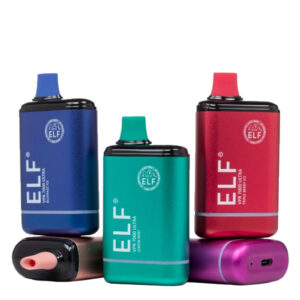
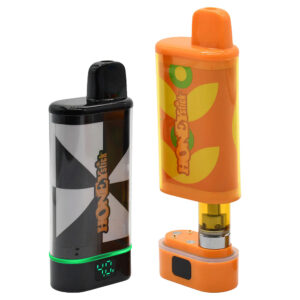

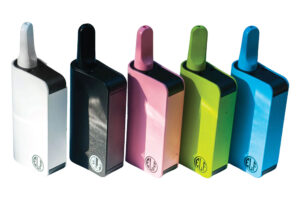
Let’s do a quick inventory of your brands.
OK, so VPR, basically, we have brands to cover each of the different product segments. Starting at the top, the main one is ELF, which does disposable nicotine vapes. It’s actually our trademark. We actually just ran an ad for the new launch in your magazine. It was for our new 12,000 and 18,000 puff units that are set up to be really cool. They just launched a couple months ago at the last CHAMPS. That covers our nicotine segment.
Within that, we also licensed out our ELFTHC which covers the CBD, the Delta products, and makes some really cool accessories for the consumable flowers as well. We then have our Dissim brand, which I already mentioned. That focuses on lighters. They have a unique patent for inverted lighting. There’s a finger hole so you can hold it upside down without burning your finger. It’s great for lighting a pipe, whether you’re a tobacconist or a cannabis user. We have soft flame and torch varieties.
Then there’s the CartDub brand I mentioned, which focuses on oil recovery. Everybody who consumes cartridges has a graveyard of them that aren’t vaped down to the bottom or that broke prematurely. But the oil is expensive; you probably paid sometimes $40-$50 for a prefilled THC medical cartridge or whatever . . . It would be in your best interest to be able to reclaim and reuse that oil and put it into hardware that works. So CartDub allows you to do that: Reclaim the oil safely and then reuse it. It’s kind of like an oil recycling system.
We also have our HoneyStick brand. That originated from back when people were using simplistic technology for their concentrates, filling hundreds of dollars of extracted oil into a device that had a classic wick and a two-dollar tank. That’s like drinking Louis 13th out of a Dixie Cup. It’s just crazy. At the same time, you had nicotine vaporizers for e-juice—worth a fraction of the cannabis oil—that allowed you to taste every intricacy of this less expensive liquid and have this awesome vapor experience with a big plume. That’s why we launched HoneyStick; to offer extract vaporizers to create an experience that the e-liquid guys were getting at the time. We actually partnered with an extractor in 2016 and won a Cannabis Cup. We have a little trophy for having the best vape pen and prefill combo. It was a great launchpad for the brand. But that brand historically hasn’t sold any prefills. We focus on the hardware.
We also have several new and exciting brand names that we’ll be launching pretty soon, so stay tuned.
Let’s talk about the regulatory dance. In this space, it’s always changing—and that goes for every sector; vapes, hemp, everything. How do you stay ahead of the curve?
At the end of the day, it comes down to having a good team, and that means both internal and external—external being people who can give you good legal advice. That’s incredibly important. We have a solid distribution network, too. That’s important, because responsible distributors who handle their territories properly will give us feedback on how they need the products or if they can even carry the products per their local laws and regulations. That allows us to factor all of this in and try to evolve the products as fast as these rules and regulations evolve.
At the last TPE, I couldn’t help but notice how many disposable vape booths there were. They were everywhere. Likewise, walk into a smoke shop and you’ll see a billion options. How do you find success in such a saturated market?
It comes down to a few things. If you come out with a bad product, the consumer is going to see through it. You get one shot. We’ve tried throughout our history to only deliver good quality products. We have put a lot of emphasis on our IP for each brand over the last ten years, as well as the development of the brand names. A lot of our success has to do with the brand, which we not only protect, but also maintain consistent quality for. So, I think it’s a combination of those things; delivering good quality and consistent products while trying to make them recognizable to the consumer. A key thing we’ve done with HoneyStick is provide a high performance vaporizer at a reasonable price. Same with Elf; we brought together different genres, technologies and the experience to create a quality, consistent product without breaking the bank.
I want to put the focus on you for a minute. How did you end up in the space?
Well, straight out of college, I wanted work in finance. I wanted to have a big corporate job, and, I guess, be a “suit.” I started playing around with one of the large Fortune 500 companies as a beginning employee. I had to wear my suit every day and show up to work at this arena sized corporation. They would give us the last parking spot as the starting employees and we would have to walk by the cars as they kind of got nicer to the front. It didn’t take me that long to realize that yeah, I had a decent paycheck and great benefits and security, but I realized that at a company of that size . . . there’s no way I’m going to be able to ever talk to the CEO because this guy has a Bentley that he built a canopy for outside. My next promotion will be if this guy retires or passes away. The only thing that I have to look forward to is a team building paintball or mountain biking retreat. That’s when I realized that I couldn’t do this. The story of every head shop owner, right?
I wanted to take a risk. So when the opportunity came up through Keven Frija, who is the CEO of VPR Brands—and we work side by side of on all of these projects—I decided to take it. He said, “Hey do you want to get involved in this.” I asked him what it was and he told me it was an electronic cigarette. I was like, “Sounds odd, but cool. Can’t be worse than what I’md oing right now. As soon as I got involved I felt like we were really breaking ground—and we were. It was exactly the spice I needed in my life. It’s something I felt like I belonged to, whereas in corporate work, it was just a constant countdown . . . I’m not knocking the corporate guys; they do a great job . . . But as soon as I got into this, I saw the community and the culture of the head shop and cannabis space. I felt like I was home.
Anything you want to close on?
Well, I didn’t prepare a pitch, but if there’s anything your readers could get out of this, I’d want it to be who we are as a company . . . Cannabis culture is one where you can find a lot out just by asking around. If you ask around about us, you’ll find out that we’re a good group of guys and we look forward to working with everybody. That’s really all it is. I don’t have a “Come on out, zero percent APR, zero money down, no credit checks” kind of pitch . . . or the Shake Weights thing . . .
Conversation hilariously devolves into Shake Weight stories and South Park references.
But that’s what I got, man. That’s my last two minutes.
It was perfect. Thanks again for taking the time, Dan.
Thank you. Have a great rest of your week!








